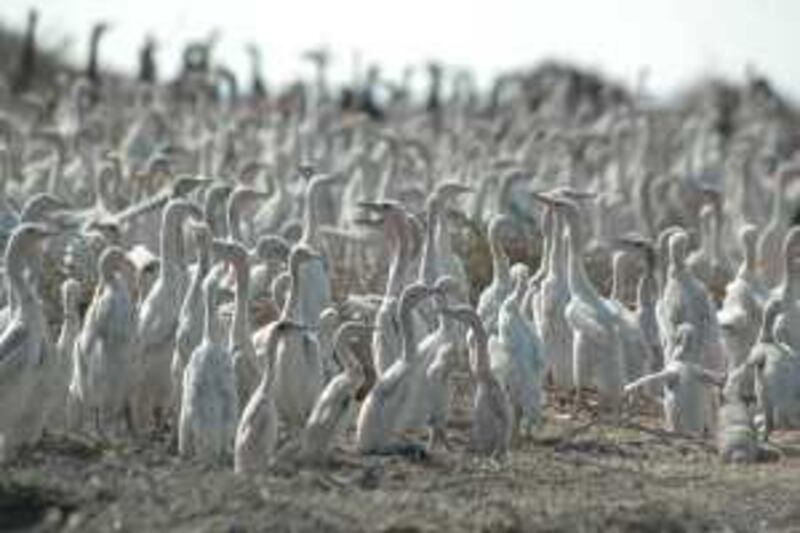ABU DHABI // A rare breed of cormorant is in severe decline on the coastal desert islands that were previously its stronghold. The Socotra cormorant is endemic to the Arabian Peninsular and parts of Africa. But the latest scientific data suggests that Abu Dhabi emirate might be on its way to losing its status as the host of the world's largest population of the endangered bird.
A survey last year by the Environment Agency-Abu Dhabi (EAD) found fewer than 10,000 pairs of Socotra cormorants on the emirate's islands. Although the situation may have improved very slightly - a smaller study this year estimated that there were marginally more than 10,000 pairs - it still represents a steep decline since a 1994 baseline survey that put the number of breeding pairs at between 25,000 and 30,000.
A slender creature with black feathers, the bird survives on a diet of small fish. Its surface-diving skills once made it an ally for Chinese fishermen, who would follow the birds to find the best catches. But it is extremely sensitive to human presence, and needs remote, flat sandy islands with uninterrupted terrain. There, during the October to March breeding season, the cormorants gather in colonies that can number tens of thousands, so tightly packed together that they darken the landscape. Even out at sea, the smell can be overpowering.
Last year's survey counted four active breeding colonies, on Umm al Qasr, Dinah, Qasr Salaha and Yasat Judairah, with colonies having vanished from Ghagah, Furaijidat and Zarku. This year, the colony on Yasat was gone, too. According to Dr Salim Javed, EAD's deputy manager for bird conservation, the number of Socotra cormorants at roost sites has also declined considerably over last decade, mostly due to continued persecution at breeding sites and disturbance.
"We are really concerned because this is a globally threatened species," said Dr Javed. Socotra cormorants are listed as vulnerable to extinction by the International Union for Conservation of Nature, with only a very few sites where they can breed undisturbed. The 2004 Marine Atlas of Abu Dhabi noted that, at that point, the emirate supported seven of the world's 12 known colonies. Some of the decline, said Dr Javed, was natural. Like many other sea birds, colonies of the Socotra cormorant shift from time to time as the birds find new spots to roost.
But the sheer scale of the change - he suspects as many as 40,000 birds have moved to Saudi Arabia - suggests that man-made pressures such as "development, persecution, the collection of eggs and occasional shooting of birds" are the main culprits. "Immediate actions are needed to ensure long-term conservation of this globally threatened species," said Dr Javed. Dredging and destruction of intertidal areas have disturbed the areas where the cormorants nest and feed. In addition, new roads are making it easier for land-based predators such as feral cats to reach the colonies.
There is also a more direct threat from people. For generations, Emirati fishermen have seen the birds' eggs and chicks as a source of food. It remains legal to harvest the eggs, on the grounds that the practice has its roots in the country's heritage. Dr Javed said that while the current law did not accord protection to the Socotra cormorant, EAD was working to have this reviewed. @Email:vtodorova@thenational.ae





